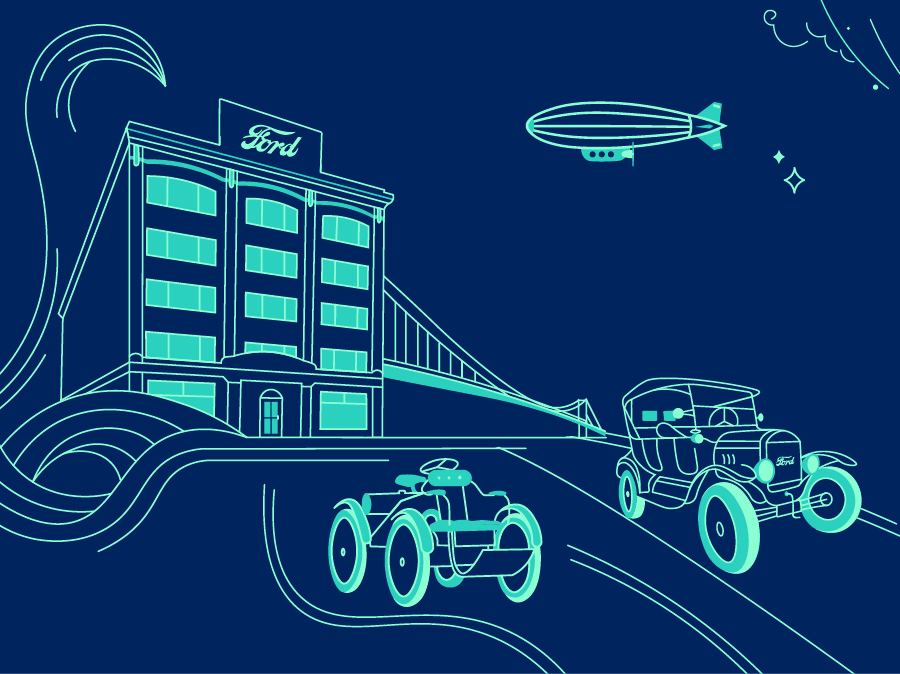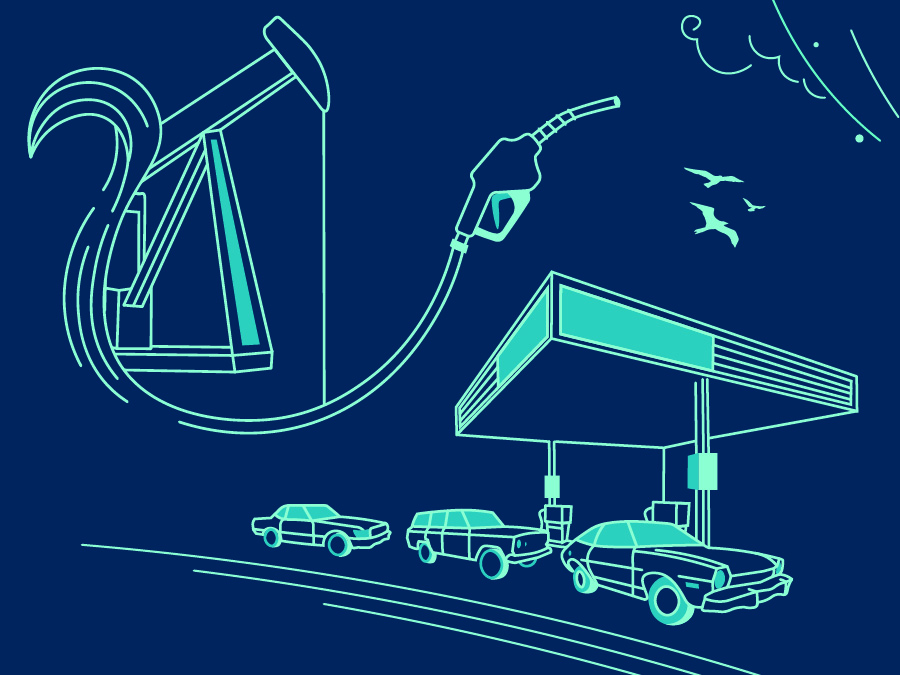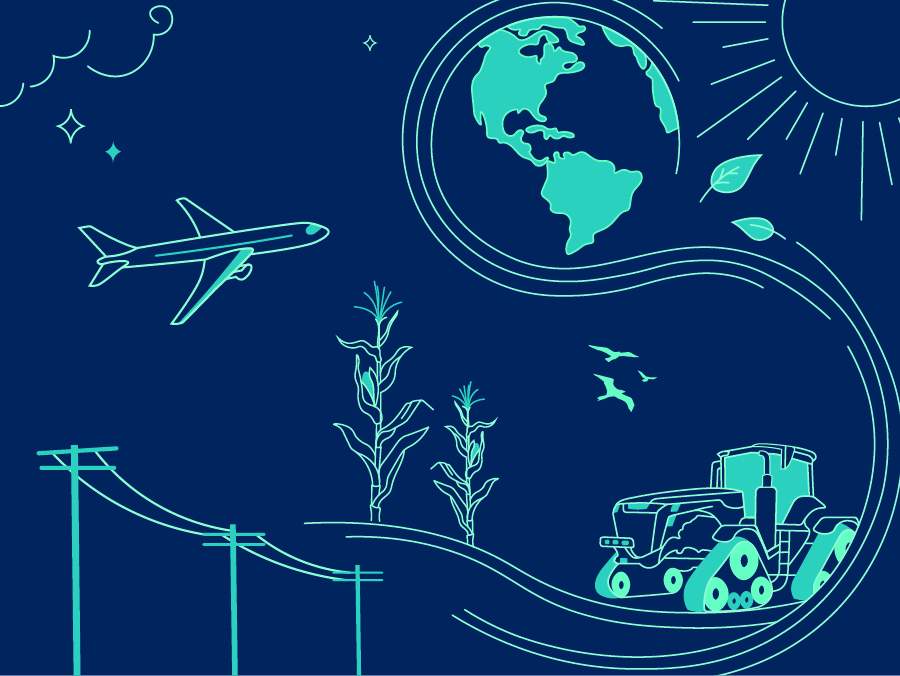Decades have been spent searching for a better way to power our planet. Many of the world’s biggest companies and brightest minds have traversed the globe to find the answer.
Regrettably, in their quest to solve one of the most complex problems in human history, they have continuously overlooked one of the most simple, straightforward and readily available solutions: corn.
“We think of corn as nature’s battery,” said Jeff Broin, POET’s Founder and CEO. “The leaves act as the solar panel, and then the energy is transferred from the sun into the corn kernels and the biomass, which can be stored indefinitely. So, the plant acts as a battery.”
That battery — and its ability to power the planet — has a much more storied history than most realize.
In 1896, bioethanol powered one of the country’s first internal combustion vehicles, Henry Ford’s Quadricycle. In 1908, the Model T, which could run on both bioethanol and petroleum, became the first-ever flex-fuel vehicle. Ford himself called bioethanol “the fuel of the future.”
But bioethanol use waned in the 1920s, as Prohibition stymied the production of alcohol-based fuels. The Age of Oil had begun to take hold. By the 1940s, the oil industry in the United States was drilling 20,000 new wells per year — most of them roughly one mile deep —and pumping five billion barrels of oil per day from inside the Earth.
Bioethanol was pushed to the back burner.
In the 1970s, the energy crisis brought biofuel blends back into favor, and by the early 80s, bioethanol’s value was slowly beginning to take hold, though mainly as a clean and effective octane booster for gasoline.
And that’s when farmers like Lowell Broin decided to take matters into their own hands. In 1982, Broin, a Minnesota farmer, always looking to get more value from his corn, put a pressure cooker full of corn mash onto the kitchen stove to learn what he could about the basics of producing bioethanol.
Four decades later, U.S. bioethanol production has reached 15 billion gallons per year and accounts for the purchase of five billion bushels of corn — a much-needed market for the ever-increasing yields grown by American farmers.
And POET, with Lowell’s son Jeff at the helm, has been at the forefront of that revolution. Today, POET’s 33 biorefineries produce three billion gallons of bioethanol, 14 billion pounds of distillers dried grains and 975 million pounds of corn oil per year. The company purchases more than five percent of U.S. corn each year.
In just the last decade, technological advancements have proven that the promise of bioethanol as the “fuel of the future” may finally be fulfilled. But the future of bioethanol, it turns out, may mean far more than fuel.
It may mean the beginning of the end of the Age of Oil.
“Until the 1800s, humans got everything they needed from the surface of the land. Everything. That all changed with the Age of Oil,” said Doug Berven, POET’s VP of Corporate Affairs.
“Now, we may find that returning to that era of agriculture and getting back to creating what we need from the surface of the land is actually the future.”
Doug Berven, POET’s VP of Corporate Affairs
That future would mean farmers moving to the forefront of an agricultural revolution.
“Right now, we think of farming as mostly livestock and grain,” said Berven. “In maybe just 20 years from now, farming could mean livestock, grain, energy, bioproducts and chemical building blocks. Farmers will be leading this agricultural renaissance.”
Fourth-generation farmer Steve Sinning has been working his family’s land in Lennox, S.D. since the 1970s. He has seen firsthand how bioethanol has improved the market for corn as yields have continually increased over the past few decades.
“Since the ‘80s, our corn yields have increased greatly,” said Sinning, who now produces up to 250 bushels per acre, nearly triple the yields from just 30 years ago. “If we did not have bioethanol, our corn prices would be way lower, way lower. [The bioprocessing facilities] use billions of bushels of corn every year, which creates a great market. Almost all of my corn goes to the bioethanol plant.”
The economic impact of bioethanol drives the market for the nation’s surplus corn, and the positive environmental impact of bioethanol has become more critical as the world becomes more aware of climate issues and ecological health.
“Bioethanol production is very sustainable,” said William Gibbons, the Associate Dean for Research at South Dakota State University’s College of Agriculture, Food and Environmental Sciences. “We’re actually finding through sustainable farming practices that we’re pulling carbon out of the atmosphere and adding it to the soil. This is basically the opposite of what we do when we extract petroleum and burn oil to generate energy.”
American oil refineries alone emit roughly 200 million tons of greenhouse gases every year, according to the Environmental Protection Agency (EPA). That’s roughly five percent of all greenhouse gas emissions in the U.S. In a 2021 study, researchers at the U.S. Department of Energy’s Argonne National Laboratory found that the use of corn bioethanol actually reduces the world’s greenhouse gases and lowers our carbon footprint.
Relatively simple changes on a national level would do even more. If E15 replaced E10 nationwide, for example, greenhouse gas emissions would be reduced by 17 million tons annually, according to a recent report by Growth Energy. That’s the equivalent of removing nearly four million vehicles from the road. A corresponding study by ABF Economics found that nationwide use of the 15 percent bioethanol blend would create more than 182,000 additional jobs and save consumers $12.2 billion in fuel costs.
“Biofuels have gone from one percent of the fuel supply in this country in 2000 to more than 10 percent of the fuel supply today,” said Berven. “But the process creates so much more than just fuel; POET has an entire suite of sustainable bioproducts.”
Bioprocessing facilities turn that corn into everything from animal feed to corn oil to hand sanitizer. POET captures CO2 for use in carbonated beverages, welding gases, and flash freezing of foods. They’ve also created an eco-friendly asphalt rejuvenator and an industrial lubricant.
“The corn oil we produce as a result of the bioethanol production process can be used to produce biodiesel and renewable diesel,” said Broin. “How’s that for exciting? We now have biofuels as a byproduct of biofuels.”
Researchers are regularly discovering naturally-grown, ag-based bioproducts can replace more and more toxic petrochemicals.
“We believe that everything that you can get from a barrel of oil, you can get from a bushel of corn. It’s simply a matter of biotechnology and economics,” said Broin.
Those economics center on farmers in America and around the world. Average corn yields in the U.S. are now nearly 180 bushels per acre. If just the top 10 countries in the world could catch up with American production, said Berven, that would mean another 20 billion bushels of corn. Per year. On the same amount of land.
“The potential for agriculture around the world is virtually untapped. We have a chance to incentivize a global agricultural revolution.”
Doug Berven, POET’s VP of Corporate Affairs
The economics will also be driven by more markets — and higher margins — for those farmers. Over the past three decades, biofuels have been the main economic driver of significant growth in the agriculture sector. That growth has ramped up in the past few years, as biotechnology continues to reveal new uses for bioethanol.
Researchers at Oregon State University, for example, recently showed the promise of powering clean cars with direct-bioethanol fuel cells. The U.S. Department of Energy labs discovered a chemical shortcut for converting bioethanol into jet fuel. The team at POET is focused on its corn oil-to-renewable diesel fuel project.
“We have a chance to reinvent energy to address climate change,” Berven said. “If we truly want to decarbonize the world, if we want to advance beyond fossil fuels, we’ve got to get our resources from the surface of the Earth. The only way we’re going to do that is through agriculture, and it’s going to be led by farmers.”
Broin believes that already-proven premise — that farmers could soon be producing much of what the world currently gets from petrochemicals — could mean the end of hunger, the end of climate change, the end of the Age of Oil.
And the start of the next stage of that agricultural revolution.
“Now more than ever, we must embrace the bioeconomy, harvest our energy from the surface of the Earth, and significantly reduce our dependence on fossil fuels,” said Broin. “Soon, everyone will realize how important farming is to our future. The potential of agriculture is so vast, and I think the world is finally starting to understand how far it can take us. If we truly want to supercharge the economy and power a brighter future, we need to look no further than the land that surrounds us — the land that farmers have worked for thousands of years. The sun, the soil, and the seed are the key to a low-carbon future.”










